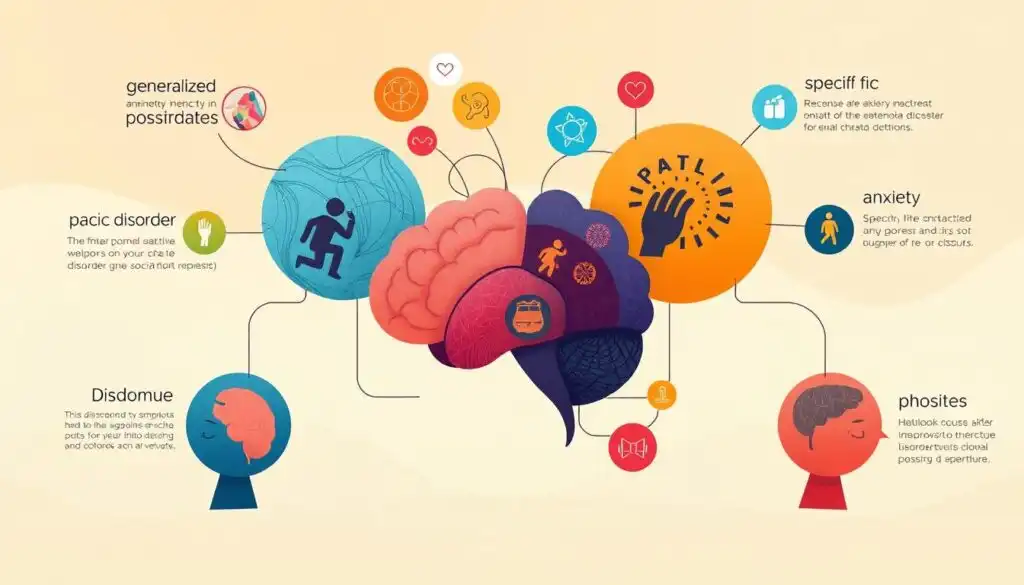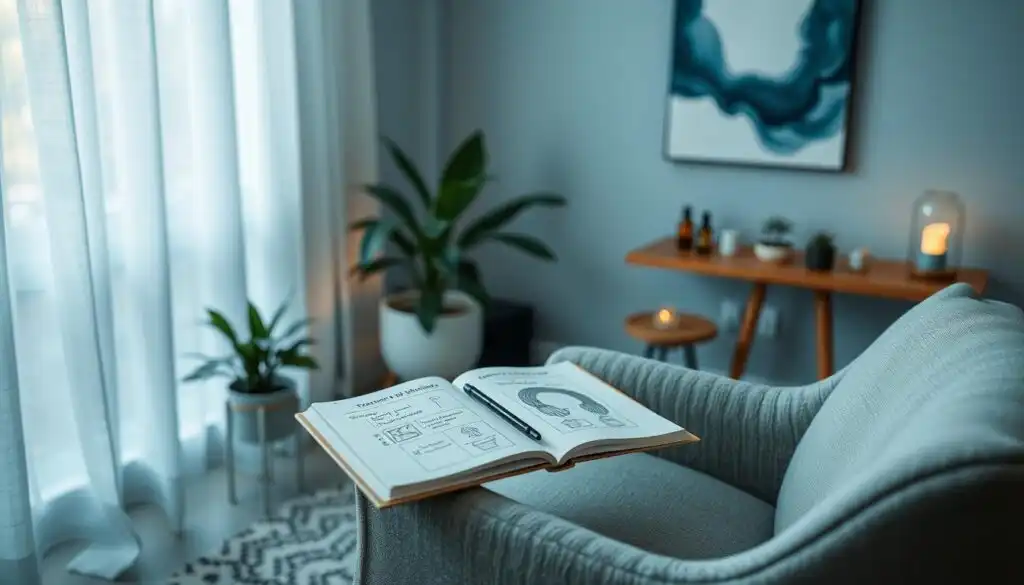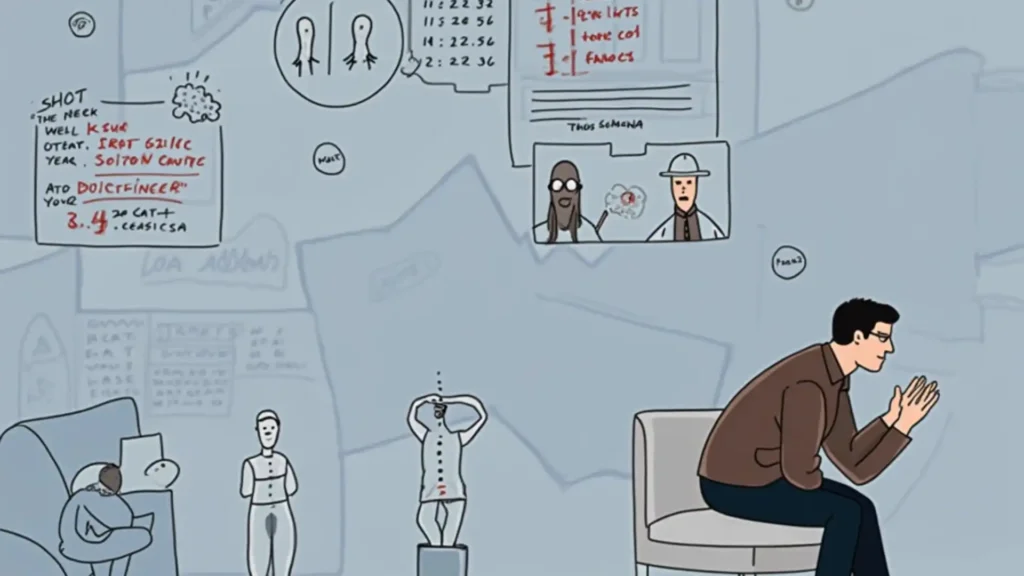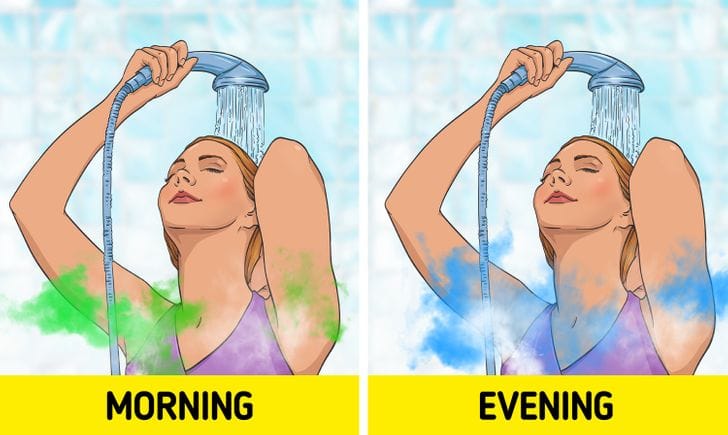Dealing with anxiety disorders can feel overwhelming. But, a detailed treatment plan can help you manage your symptoms and improve your well-being. This guide will help you understand anxiety, its effects on daily life, and the different types of anxiety disorders. You’ll learn how to create an effective treatment plan. treatment plan objectives for anxiety

If you’re facing Generalized Anxiety Disorder (GAD), Panic Disorder, or Social Anxiety Disorder, this guide is for you. It will give you the tools to set goals, plan timelines, and reach milestones in managing your anxiety. You’ll learn about proven treatments like Cognitive Behavioral Therapy (CBT), Acceptance and Commitment Therapy (ACT), and relaxation techniques.
This guide is your go-to resource for navigating anxiety. It will help you track your progress and adjust your treatment plan when needed. Start your journey towards better mental health and a more fulfilling life.
Understanding Anxiety Disorders and Their Impact
Anxiety disorders are different from normal worries. They cause intense, ongoing anxiety that can really get in the way of your daily life. The DSM-5-TR lists several types, like Generalized Anxiety Disorder (GAD), Panic Disorder, Specific Phobias, and Social Anxiety Disorder.
Clinical Presentation vs Normal Anxiety
People with Generalized Anxiety Disorder (GAD) worry a lot about many things. They also feel physical symptoms like muscle tension and trouble focusing. These feelings can really mess up their daily life and relationships.
Effects on Daily Functioning
Anxiety disorders can really hurt your quality of life. They make it hard to work well, keep up relationships, and enjoy free time. For example, Social Anxiety Disorder can make you avoid being around people. Panic Disorder might make you fear having a panic attack in public.
Common Anxiety Disorder Types
Other common anxiety disorders include Specific Phobias, like fear of heights or animals, and Panic Disorder. There’s also Agoraphobia, Separation Anxiety Disorder, and Selective Mutism. Knowing what each one is like is key to getting the right treatment.

Core Components of Anxiety Treatment Planning
Creating a good anxiety treatment plan is key to tackling this common mental health issue. These plans cover many disorders like OCD, panic disorder, and social anxiety. They are specific, measurable, realistic, and work together, making care focused and tailored.
The main parts of an anxiety treatment plan include identifying problems, setting goals, and outlining actions. First, therapists look at the client’s history and symptoms to find the causes of their anxiety. This helps set clear, reachable goals to build confidence and manage thoughts.
Goals should be specific, measurable, and have a deadline. This guides the use of proven anxiety management strategies like cognitive-behavioral therapy and relaxation techniques. Regular checks and updates to the plan keep it effective and personalized for the client’s needs.

By focusing on the core of anxiety treatment planning, mental health experts help clients manage their well-being. This leads to lasting improvements in their life quality.
Treatment Plan Objectives For Anxiety
Creating a good plan for treating anxiety starts with clear goals. These goals are SMART (Specific, Measurable, Achievable, Relevant, and Time-bound). They help both the client and the therapist know what to work towards. This makes the path to feeling better clearer.
Setting Measurable Goals
Goals for treating anxiety might be to have fewer panic attacks. Or to spend more time in situations that make you anxious. You might also want to go to social events by yourself. Having specific, countable goals lets everyone see how far you’ve come.
Establishing Timeline Expectations
It’s also important to set realistic time frames. This keeps you motivated and moving forward. For example, learning two new ways to handle anxiety and using them often can be a goal. This goal helps you stay on track and focused.
Creating Achievable Milestones
Treating anxiety is a step-by-step process. Each step is a milestone that helps you grow. These might include finding out what makes you anxious, learning ways to cope, and facing your fears little by little. Celebrating these wins helps you see how far you’ve come and keeps you going.

By setting SMART goals, planning out your time, and setting up achievable steps, your anxiety treatment plan is clear. It shows the way to fewer symptoms, better functioning, and a happier life.
Evidence-Based Treatment Approaches
Managing anxiety disorders has many effective treatment options. Cognitive Behavioral Therapy (CBT) is a top choice. It helps people change negative thoughts that cause anxiety. Exposure therapy also works well, by slowly facing fears to lessen anxiety.
Medication is another key part of treatment. Antidepressants like SSRIs and SNRIs help balance brain chemicals. Anti-anxiety drugs and beta-blockers offer quick relief from anxiety symptoms.
Combining psychotherapy and medication often works best. This approach tackles anxiety from different angles. The right treatment depends on the anxiety type, client needs, and what works for them.
New research shows Acceptance and Commitment Therapy (ACT) and Mindfulness-Based Therapies are also helpful. They teach acceptance and being present. These skills are crucial for dealing with anxiety.
Cognitive Behavioral Interventions and Strategies
Cognitive-behavioral therapy (CBT) is a top choice for treating anxiety disorders. It involves weekly sessions for 12-16 weeks. Afterward, booster sessions help you keep using your new skills.
CBT focuses on changing negative thoughts and gradually facing fears. This helps you overcome anxiety.
Cognitive Restructuring Techniques
Cognitive restructuring helps you spot and challenge negative thoughts. These thoughts often make you anxious. By changing them to more realistic ones, you can feel less anxious.
This is very helpful for people with generalized anxiety disorder (GAD). GAD makes you worry too much about many things.
Behavioral Activation Methods
Behavioral activation is a big part of CBT for anxiety. It encourages you to do things you enjoy, even if you’re scared. This helps you face your fears and feel less anxious over time.
Exposure Therapy Guidelines
Exposure therapy is key in CBT for anxiety. It helps you slowly face the things you fear. This makes you less anxious.
It’s important to start small and go at your own pace. This makes exposure therapy more effective.
Implementing Relaxation and Coping Skills
Relaxation and coping skills are key to managing anxiety. They help reduce anxiety’s physical symptoms. Techniques like deep breathing, progressive muscle relaxation, and mindfulness are very helpful.
Deep breathing, or diaphragmatic breathing, is a simple yet powerful technique. It involves slow, controlled breaths. This can help your body relax and reduce stress.
Progressive muscle relaxation (PMR) involves tensing and relaxing muscles. It helps you notice and release tension. Regular practice can also help with chronic pain and improve sleep.
Mindfulness techniques, based on Buddhist meditation, are also effective. They help you stay present and accept your thoughts and feelings. This can make anxious episodes less intense.
Adding these skills to your anxiety treatment plan can be very beneficial. They help you manage stress and improve your well-being. Remember, like exercise, these skills need regular practice to work well.
Monitoring Progress and Treatment Effectiveness
Keeping track of how well treatment is working is key. Clinicians use standardized scales to see how symptoms change. This helps spot where things are getting better and where they need more work.
Assessment Tools and Methods
Tools like the Depression Anxiety Stress Scale (DASS-10 or DASS-21) give clear insights. They help healthcare providers see how anxious a client is. This info helps them adjust treatments as needed.
Tracking Symptom Changes
It’s important to watch how symptoms change over time. Clinicians can see patterns and celebrate successes. They can also find areas that need more work. This keeps the treatment plan on track with the client’s goals. treatment plan objectives for anxiety
Adjusting Treatment Plans
Treatment plans should change as needed. Clinicians use the data from anxiety scales to make these changes. They might tweak strategies or add new techniques. This makes the treatment more effective for each client.
Regular checks on progress and treatment are vital. They help ensure the client’s needs are met. With the right tools and methods, healthcare providers can work with clients to improve their mental health.
Documentation and Insurance Requirements
Keeping a detailed record of your anxiety treatment is key for getting insurance to cover it. Insurance companies need to see your treatment plan to approve it. This includes your diagnosis, goals, treatments, and how you’re doing.
As a mental health expert, you must keep detailed records of each session. Note what treatments you used and how you’re getting closer to your goals.
Your treatment plan should clearly show your mental health condition and how you’re managing your anxiety. It should include your diagnosis, any other health issues, how long you’ve had symptoms, and how they affect your daily life. Insurance companies check if the treatments are needed and follow best practices.
By keeping accurate records of your treatment plan documentation, insurance coverage, and mental health records, you can make the approval process smoother. This helps you get the care you need without interruptions. Being organized with your paperwork is crucial for managing your anxiety and reaching your recovery goals. treatment plan objectives for anxiety
Conclusion
Effective anxiety treatment plans are made just for you. They use proven methods and check on your progress often. Mental health experts help you set goals and find the right ways to manage your anxiety.
They keep an eye on how you’re doing and adjust your plan as needed. This way, you can keep improving your life and feeling better over time.
Managing anxiety is a journey, and it’s okay if it’s not always easy. But with a good plan and support, you can get your life back. Celebrate every small win and ask for help when you need it.
Stay focused on your goals and be ready to change your approach if needed. This way, you can face anxiety’s challenges and come out stronger.
Your mental health is very important, and you should live without anxiety holding you back. Use the tools and help available to you. Start a journey towards a happier, more balanced life.
With the right strategies and support, you can manage your anxiety and do well. Take charge of your mental health and thrive. treatment plan objectives for anxiety
Discover more trends:
- Natural Methods to Alleviate Anxiety
- The Hidden Side Effects of Drinking Coffee First Thing in the Morning
- People experiencing anxiety and depression should avoid these 10 foods
- Late Motherhood: The Surprising Link to Longevity, Health, and Happiness
- The Ultimate Guide to Sustainable Weight Loss
- Follow us on Facebook
- Follow us on Pinterest





